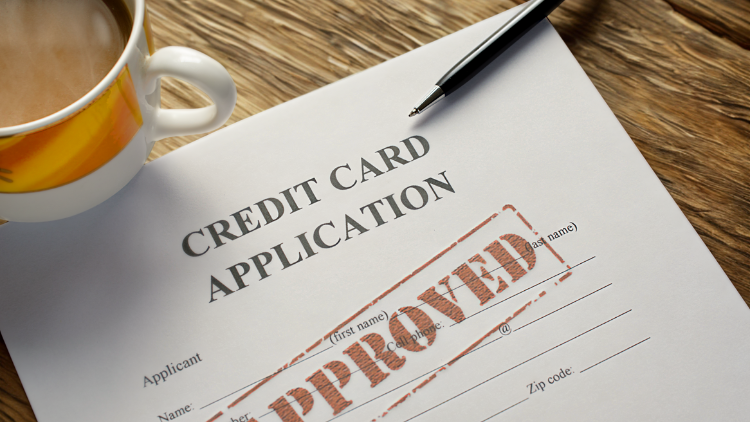Getting your first credit card can feel like a major life milestone, right up there with getting your driver’s license.
It can also feel incredibly intimidating. You’ve probably heard horror stories about debt and hidden fees, and the pressure to make the “perfect” choice can be overwhelming.
Let’s start by reframing that…

A credit card isn’t just a piece of plastic for buying things. When used correctly, it’s the single most powerful tool for building a strong financial future. A good credit history is your key to getting a car loan, renting an apartment without a co-signer, and securing better insurance rates down the road.
This guide will walk you through five simple, jargon-free steps to choose a first credit card you won’t regret—one that will serve as a launchpad for a lifetime of financial success.
Step 1: Understand Your Goal (It’s Not About Free Money)
Before you even look at a single card, know this: the primary goal of your first credit card is to build a positive credit history. That’s it. Rewards, perks, and high credit limits will come later.
For now, your mission is to show the financial world that you are a reliable, responsible borrower.
Every on-time payment you make is a gold star on your financial report card.
Step 2: Know Your Options: The 3 Types of Starter Cards
Because you have a “thin” or nonexistent credit file, you’ll need to look at cards specifically designed for beginners. Here are your three main options:
- Student Cards: If you are a college student, this is the best place to start. Issuers design these cards for students with limited income and no credit history. They are often unsecured (meaning no deposit is required) and may even offer some modest rewards. A great example is the Discover it® Student Cash Back.
- Secured Cards: This is the most accessible option for almost anyone looking to build credit. A secured card requires a refundable security deposit (usually around $200) that becomes your credit limit. It works like a regular credit card and, most importantly, reports your payments to the credit bureaus. After months of responsible use, the issuer will often upgrade you and refund your deposit. The Capital One Quicksilver Secured Cash Rewards Credit Card is a top-tier choice.
- “Credit Builder” Unsecured Cards: Some cards are designed for people with limited credit who aren’t students. These are basic, no-frills cards that offer a path to building credit without a security deposit, though they may be harder to qualify for than a secured card.

Step 3: Look for These 3 “Regret-Free” Features
As you compare starter cards, ignore the flashy ads and focus on these three non-negotiable features:
- $0 Annual Fee: Your first credit card should not cost you money just for having it. There are dozens of excellent starter cards with no annual fee. Make this a mandatory feature.
- Reports to All 3 Credit Bureaus: This is the whole point of the exercise. Make sure the card issuer reports your payment history to Equifax, Experian, and TransUnion. (Don’t worry, all major issuers like the ones mentioned above do this).
- A Clear Path to Growth: The best starter cards grow with you. Look for features like automatic account reviews for credit limit increases or a clear “graduation” path from a secured to an unsecured card.
Step 4: How to Apply (and What You’ll Need)
Ready to apply? The online application is simple and takes about 10 minutes. You’ll need:
- Your full legal name, address, and date of birth.
- Your Social Security Number (SSN).
- Your total annual income.
The income question can be tricky. Per the CARD Act of 2009, applicants under 21 must demonstrate an independent ability to make payments. If you’re over 21, you can often include any income you have reasonable access to.
As explained by financial aid offices, this can sometimes include allowances or scholarships that cover living expenses, but always check the card’s application terms.

Step 5: You’re Approved! Now What? (The Golden Rules)
Getting the card is the start; using it wisely is what builds your score.
- Golden Rule #1: Pay Your Bill On Time, Every Time. This is the most important rule. A single late payment can damage your new credit score. Set up automatic payments right away.
- Golden Rule #2: Pay in Full to Avoid Interest. Your card has an APR (interest rate), but you only pay it if you carry a balance month-to-month. If you pay your full statement balance on time, you will never pay a penny in interest.
- Golden Rule #3: Use It, But Don’t Overuse It. To build credit, you need to show activity. A great strategy is to put one small, recurring bill on the card (like Netflix or Spotify), set up autopay to pay it off in full, and then put the card away. This builds a perfect payment history without the temptation to overspend.
Choosing your first credit card doesn’t have to be a source of stress. By seeing it as a simple tool, picking a card with no annual fee, and committing to a few simple rules, you are taking a responsible and powerful first step toward building an excellent credit history that will benefit you for decades to come.
Frequently Asked Questions (FAQ)
What’s the minimum credit score for a first card?
There is no minimum, because these cards are designed for people who don’t have a credit score yet! Issuers will look at other factors, like your income, to make a decision.
Should I get a store credit card as my first card?
It’s generally better to get a general-purpose card (Visa, Mastercard, Discover) as your first. They are more versatile, can be used anywhere, and are often better for building a strong, foundational credit history.
How long will it take to build a good credit score?
After you’ve had your card for about six months, you will likely have generated your first FICO® Score, a widely used credit score. Consistent, responsible use over the first year will build a solid foundation.
WalletAware shares education, not individualized financial advice. Always confirm current terms on the issuer’s site before applying.